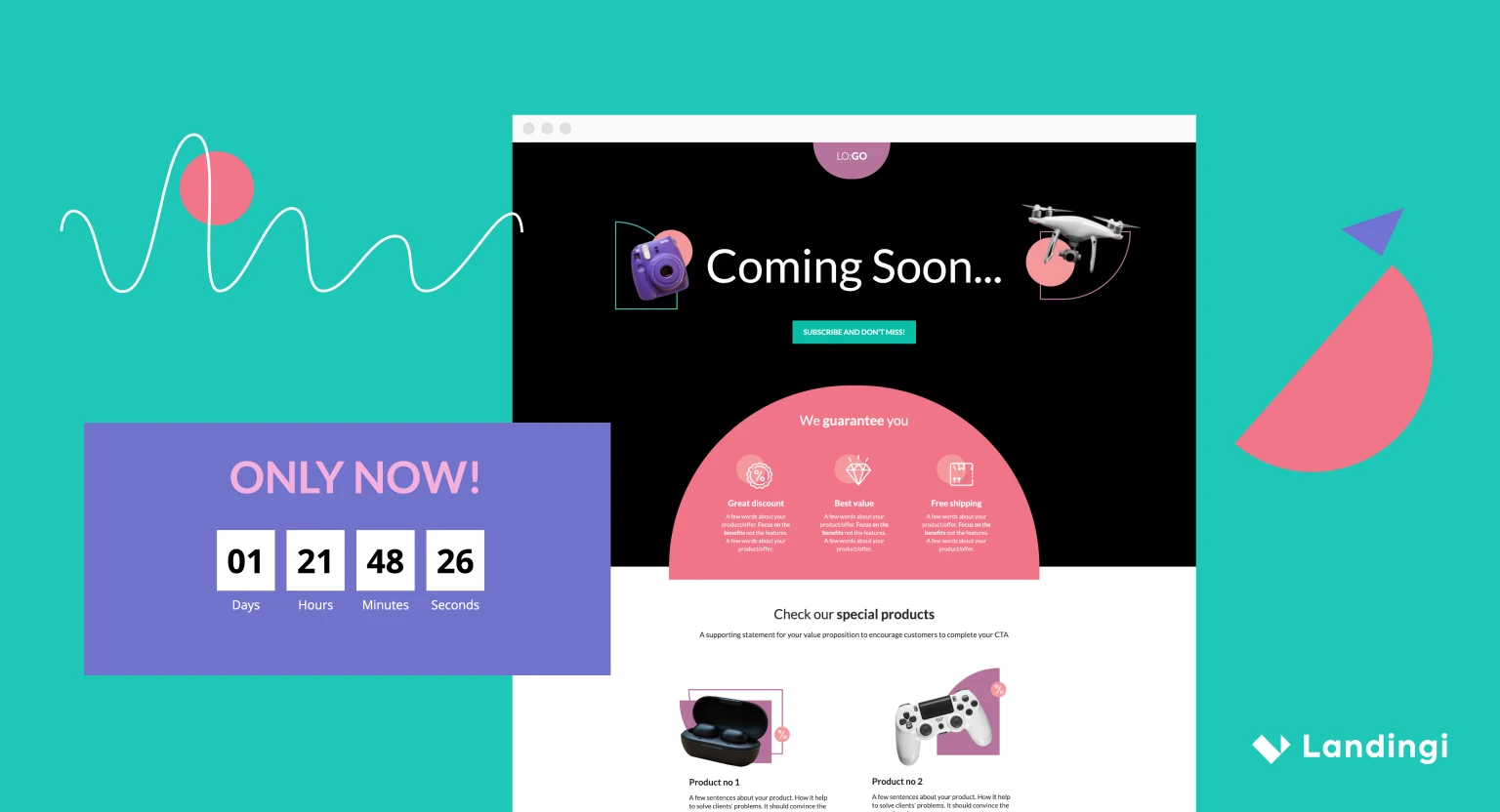OK, so you command an amazing platform to generate catchy, selling landing pages that look good and work well. You have a premium language page builder, a nice collection of landing page templates and grasp the importance of content, textual and visual, in your mother tongue. But have you thought through how you are going to cross national, cultural and linguistic borders with your landing page? We can assume you know something about what it a landing page. But it’s one thing to know in which country your page is being read. It’s a much greater challenge to induce that click or heed your Call To Action if you don’t overcome the linguistic barriers to a foreign language audience. We’ll discuss the options for creating soft landings in multiple languages, without breaking your marketing budget.
Landing Page Copywriting That Won’t Get Lost in Translation
As a copywriter for a translation company, I am often called on to assist clients in their concept and execution of localizing landing pages from a content perspective. My expertise is in English, but these days my responsibilities include ensuring that what I write and how it’s laid out communicate successfully in multiple languages, sometimes upwards of 20 per landing page. (Before I proceed further, it’s important to grasp the distinction between a landing page and a splash page — the one preceding all others when a visitor arrives at your site. Most considerations below will apply to both, but splashes have some additional constraints and characteristics.) So how do you get started with preparing landing page copywriting for translation and localization? Here are my top tips.
- Insist on a fast, free quote. Most translation and localization companies do not charge for giving a proposal for your project, but there are significant variations in response rate. You should expect an initial response almost immediately, and a substantive quite within 24 hours, provided you have supplied sufficient information about your project. Landing page translations are typically short and easy to quote so you should provide an approximate word count, the source and target languages, and any special requirements.
- Request a pro forma contract. Many language service providers work on the basis of contracts. Request a standard contract upfront and review the “fine print” so there are no surprises later.
- Prices should be quoted per word for the source document, with price variations for target languages. Translations to English tend to be less expensive: if you need to translate Japanese to English it will likely be less expensive than in the other direction. English to Japanese translation will be more due to the complexity of translation and the relative scarcity of translators. Similar considerations affect rates in other language pairs, so your quote should be explicit of target languages.
- Be wary of “management fees” and optional extras. The cost per word formula should prevail and apply to a complete document translation process. There may be projects, of course, that require additional costs beyond this, such as simultaneous voice translation of audio/video transcription. Make sure you understand all such costs and that they are really necessary for your project.
- Pay attention to personal chemistry and transparency. Agencies, after the sales/marketing person has closed the deal with you, will assign you to an account executive, typically your single point of contact for the project. This AE will be your liaison to the teams (usually one per language) which will translate your landing page. Make sure you get along and communicate well. If not, go back to the sales/marketing rep and request a new AE.
- Get a Guarantee. Most respectable translation companies will guarantee their work for a given time duration. This means they will promptly fix without charge any mistake found in their work, even if that discovery is made after delivery and acceptance of the work. Expect at least three months. Some translation agencies will offer as much as a year. It’s a nice safety blanket to have.
Freelancer Translators: Alternative #1 to the Translation Company
The downside of working with translation companies is that you will pay a premium for integration and the convenience and time-savings they bring to the table. This management overhead can be substantial: in some cases, twice as much as freelance alternatives, or even more. You also won’t have direct access to the translation resources.
Therefore, it’s understandable that landing page builders often considering working directly with freelance translators on a per-language basis to save money and to gain personal access to the professional doing the work.
The internet has made the work process much more streamlined than ever before. Platforms like Upwork, Freelancer and Fiverr feature translators to virtually every language under the sun. They are easy to use and they provide an escrow function for your project. You deposit the agreed fee for the project in advance, but it’s not released unless and until you accept the deliverable.
Just like other online services, you can review profiles and ratings, portfolio and reviews. You can ask questions and negotiate the listed rates.
The direct access comes at a cost of more management time and responsibility falling in your shoulders. You need to personally select freelancers for each language. And ask yourself: who checks the work of the translator? If you don’t have a trusted linguist in the target, it’s usually a good idea to hire in pairs: one to check the work of the other, and to serve as a backup if one flakes out.
Alternative #2 to Translation Companies: Welcome to the Machine… Translation
For landing pages and more, it may be sorely tempting to consider using Google Translate, Microsoft Translator, DeepL, or one of the other usually free online line machine translation resources. The quality of the translation produced by these software algorithms – usually powered by the Artificial Intelligence modality of neural networks – is steadily improving. For some types of structured translation, they may even beat out human linguists in terms of output and efficiency.
There are some translation companies that will recoil in horror if you suggest using these for your landing pages. “Don’t give in to the temptation!” they will warn you. Do they feel threatened? Perhaps. Machine translation threatens their bread and butter.
The integration of machine translation into the arsenal of the translator and, in particular, the localization company, is an inevitability. It’s no longer a case of whether to use AI-driven translation: that war has been fought and won, by the software. The remaining question is how software can best be integrated into the art and craft of the translator and localization professional.
Machine translation can be an invaluable supplement and “second opinion” to human translation. The best translation software suggests alternatives for words and expressions that could be paraphrased. It would be foolish to ignore them. So too translation management software lets developers and localizers track multiple local language versions in a highly organized manner. At this stage, mobile app developers and other software development companies could not live without them.
In the same way that Landingi has revolutionized the craft of building and managing landing pages, translation software takes care of the humdrum mechanical aspects. That lets the creatives – rockstar designers and (humble) copywriters – step up and prove the human values of ingenuity, cleverness, invention – that produce the special sauce that differentiates a ho-hum landing page from a wicked good one
Do You Really Needed a Translation Company to Go Global?
Landing pages are an art form. Anyone who tells you they can be generated by a cookie cutter or a machine translator is selling you a bill of goods. If you have only one or two foreign languages as priorities, you can save money working efficiently via freelance platforms with a tag-team of hand-picked translators, one complementing the other.
However, as the number of languages grows, with your globalizing ambitions, you will be hard-pressed to manage your landing page localization project in this piecemeal way. As your budget allows, and your project grows in scope, it will make more and more sense to seek out a scalable one-stop solution.
It’s important to always keep in mind that – regardless of language – good landing pages follow specific best practices principles. Adhering to them will increase your conversions, regardless of language. But together with translated, localized content, you now possess the knowledge to increase click language by language, creating a truly effective globalized web presence. Work closely with your translation/localization partner to optimize the probability that your projects will produce soft landings with good, hard KPIs!





